Learn more about the striking Amazon Rainforest snakes. Whether you’re a student or just curious, here are some of the world’s most spine-chilling reptiles!
Amazon Rainforest snakes
Diverse and fascinating, the Amazonian wildlife is composed of the most varied animals, including enormous snakes.
While they may look scary, most of them are inoffensive to humans—as long as you don’t poke one of them with your finger, of course!
Even though they are frightening animals for most people, the ecosystem in Brazil, Colombia, Peru, and Ecuador, to name a few, would definitely be out of balance without them.
In today’s article, I’ll talk about the 12 most striking Amazon Rainforest snakes, their diet, and habits. Enjoy!
Amazon snakes
1. Chicken snake (Spilotes pullatus)
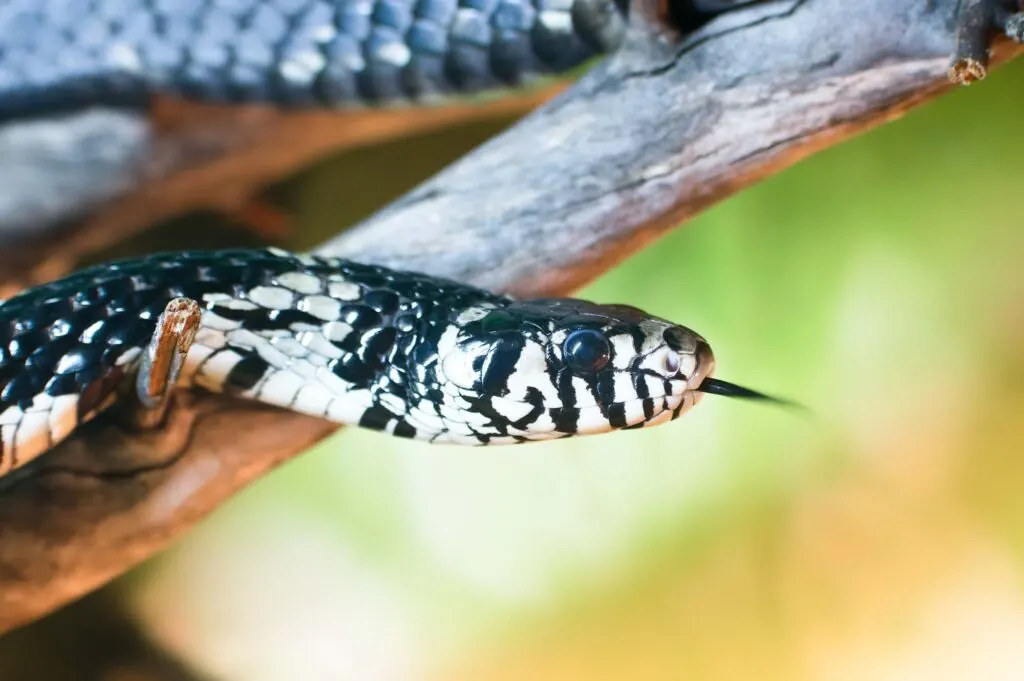
Chicken snake is a harmless jungle snake that grows up to an average of 5 feet in length. It’s otherwise referred to as the caninana and yellow rat snake.
It belongs to the non-venomous snake species, and warm environments enhance its food digestion, so being an Amazon snake is actually perfect for this species.
Beyond that, chicken snakes feed on rodents, like rats, mice, voles, and chipmunks. They also eat frogs, birds, lizards, and bird eggs. Besides, they create their defense by mimicking the venomous rattlesnake.
When hunting for prey, they intentionally and passionately forage for that prey and lay an ambush against it.
2. Emerald tree boa (Corallus caninus)
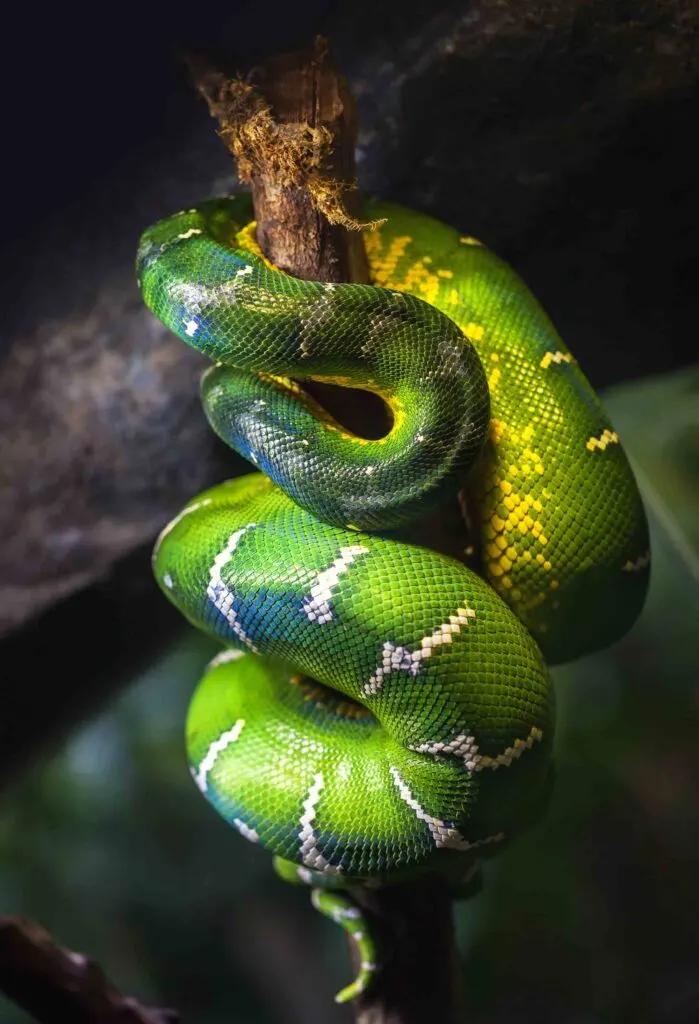
Emerald tree boas are among the non-venomous snakes in the Amazon Rainforest. They live mainly on trees and rest at the foliage region of the tree they are in.
This snake species don’t usually live in groups or colonies; instead, they create a niche for themselves in lowland tropical forests within the South American’s Amazonian and Guiana regions.
Emerald tree boa has an average length of 6-10 feet long. They mainly survive on rodents and birds.
Interestingly, when an Emerald tree boa consumes one big prey, it can live the rest of the week without feeling hungry.
3. Boa constrictor
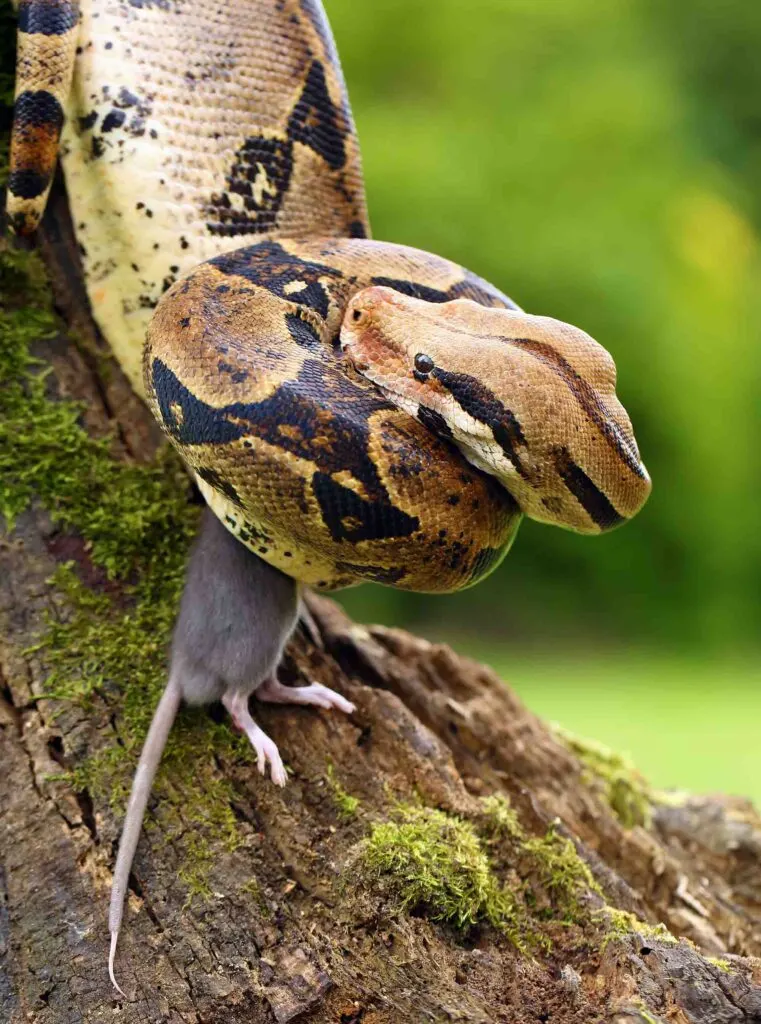
The boa constrictor is a heavy-bodied, non-venomous snake that is often referred to as the red-tailed boa or the common boa.
They belong to the Boidae family and are recognized as natives of the Caribbean Islands and tropical South America.
These Amazon snakes are defensive and would not hesitate to strike once they sense threats.
Rodents happen to be their primary diet, but they can feed on other Amazon mammals like bats. They also feed on birds, larger lizards, and amphibians.
4. Rainbow boa (Epicrates cenchria)
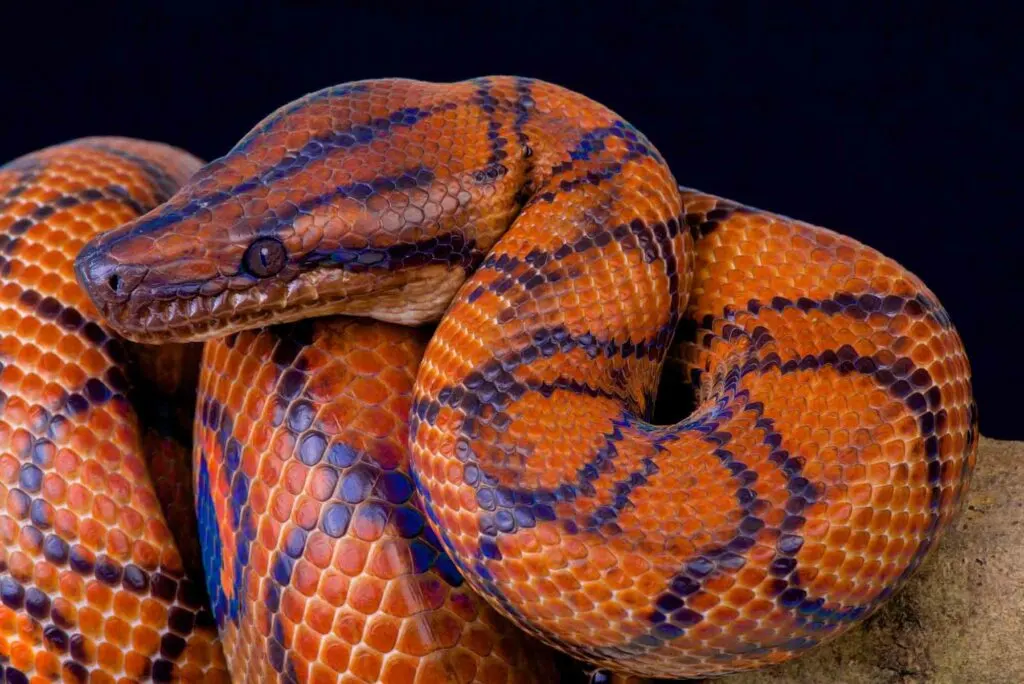
Rainbow boa is an attractive mid-sized Amazon Rainforest snake, popularly known as the slender boa. It has a round-bodied shape and dwells mainly on trees and land.
Beyond that, this jungle snake is a native of Central and South America, displaying a lovely holographic sheen that is formed by structural coloration.
It boasts of a broadhead larger than its neck, with a total length ranging from 4-6 ft.
This species of snake are insatiable eaters, and they can eat birds, bats, rodents, small lizards, and even tegus.
5. Amazon tree boa (Corallus hortulanus)
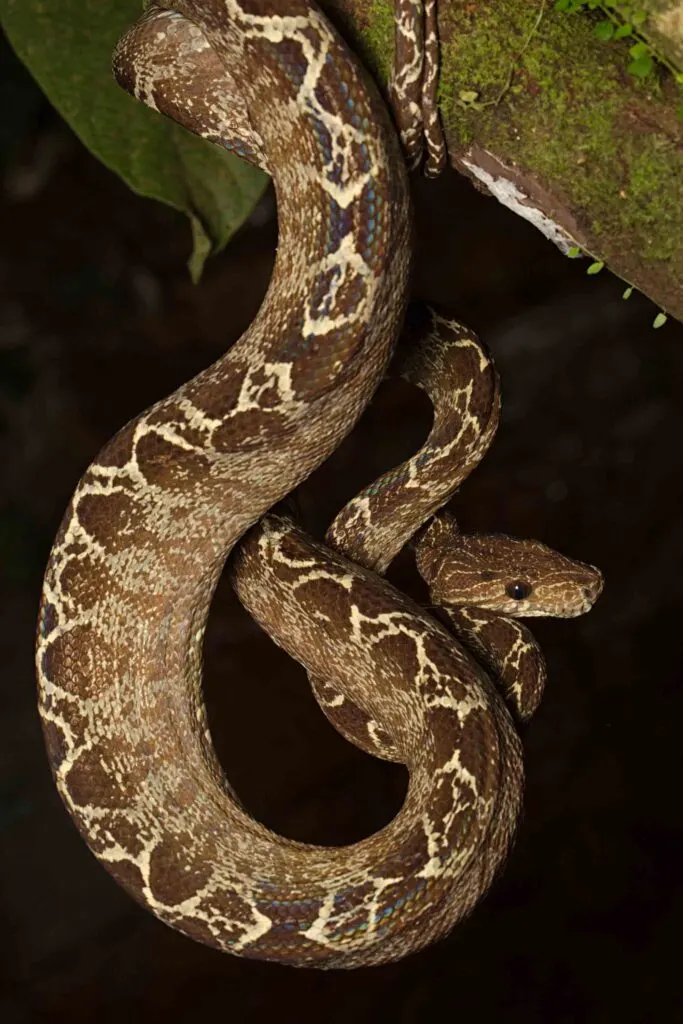
Amazon tree boa is another of the non-venomous snakes in the Amazon Rainforest, endowed with the most beautiful variety of colors and patterns.
It naturally evolves in different shades of orange, yellow, and red. This species is considered one of the most unique snakes on the earth.
It loves to play around the canopy and spends a considerable amount of time twisting and coiling its body around tree branches. To feed, it comes down to the ground at night.
It feeds on little lizards at its young age, but as it gets older, it will begin to eat rodents, bats, and younger birds.
6. Yellow anaconda (Eunectes notaeus)
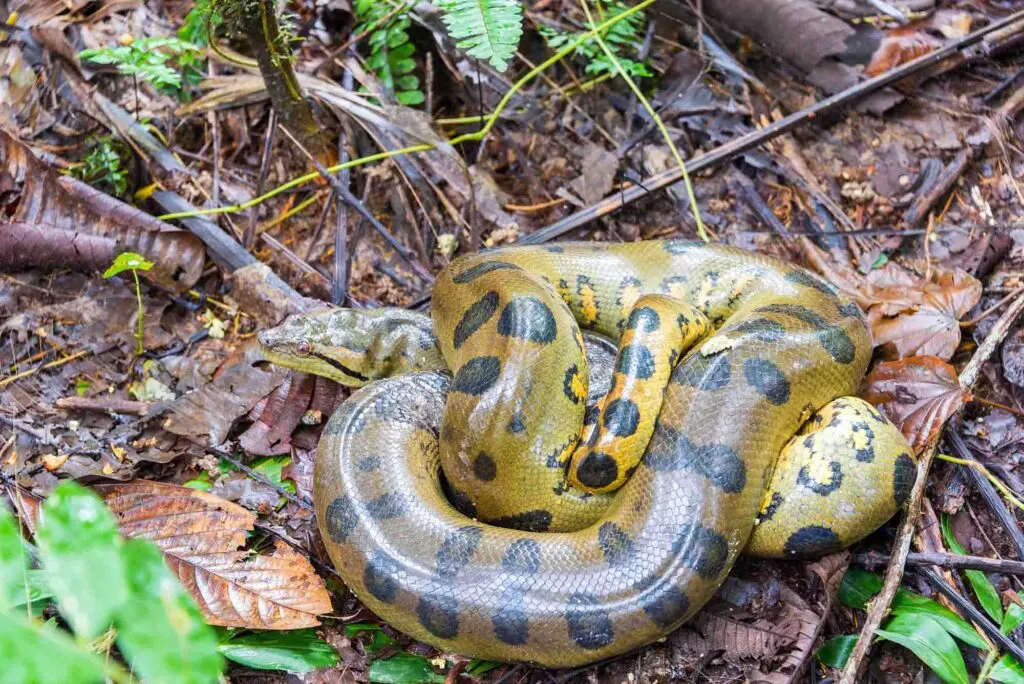
The 3-meter long yellow anaconda is among the largest snakes in the jungle and considered one of the largest snakes on the planet, only behind its close relative, the green anaconda.
It is a non-venomous carnivore snake also called Paraguayan anaconda. Beyond that, it is well known for constricting its prey before killing it.
This species mostly preys on animals that dwell in the wetland and riparian regions–animals like turtles, smaller fishes, other snakes, bird eggs and birds, and small mammals.
The yellow snake is a boa species, having southern South America as its environment.
7. South American bushmaster (Lachesis muta)
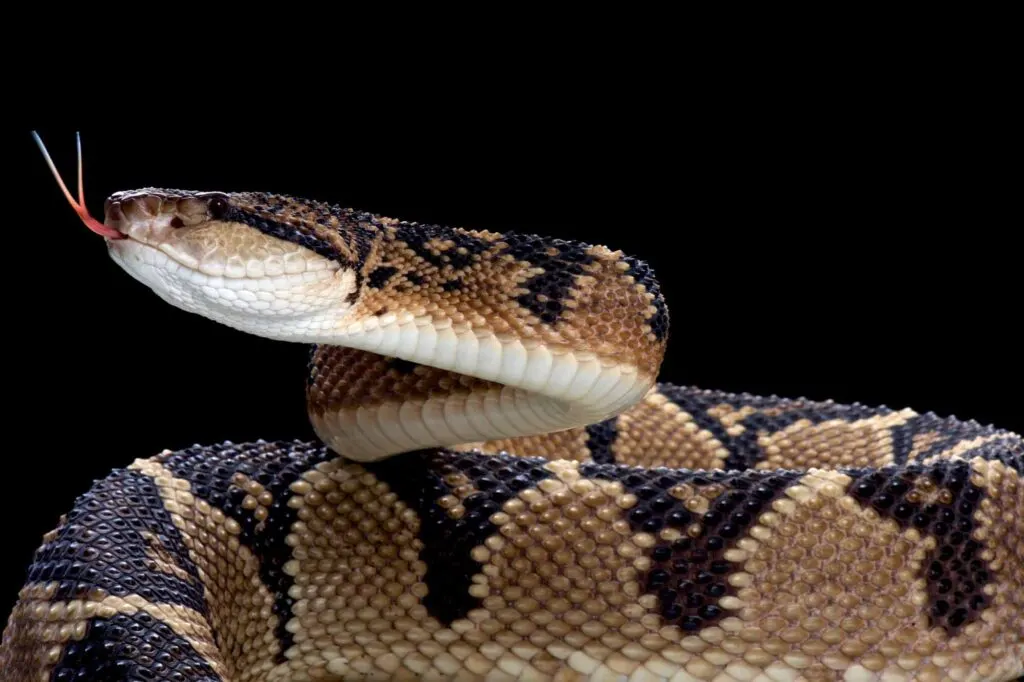
The venomous Southern American bushmasters are labeled the most venomous pit vipers in South America.
They possess a large head, and their body can grow to an average of 6 to 8 feet in length.
A single bite from this South American viper can inflict severe pain and swollenness, destroying the body tissues and causing a significant coagulopathy, which leads to excessive bleeding.
Beyond that, they feed mainly on other animals and can as well devour other snakes. They are brilliant snakes and only hide around forested areas.
8. Green vine snake (Oxybelis fulgidus)
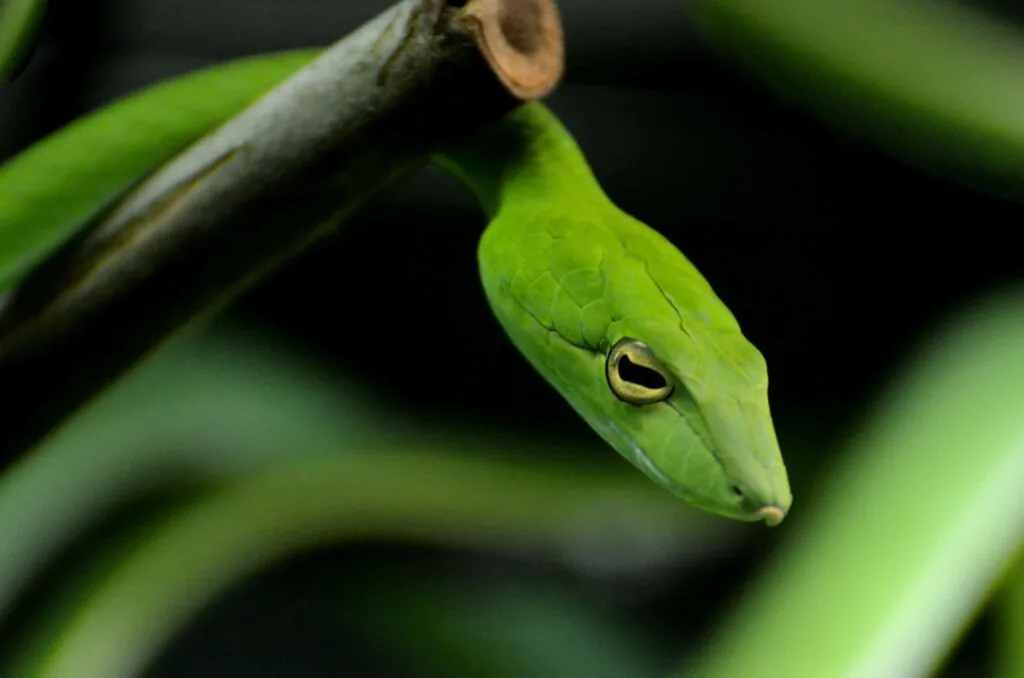
The green vine snake is a 6 feet slender jungle snake with a leafy green coloration (in its dorsum) and a gold color iris, living in Central America and northern South America.
One of its activities is flattening of the head, appearing larger–as a sign of warning. When the body is enlarged, it reveals a black and white scale marking, indicating defense or threat.
Also, they are particularly adept at seizing cute hummingbirds. This snake belongs to the long arboreal colubrid snake species and is slightly venomous to humans.
9. Common lancehead (Bothrops atrox)
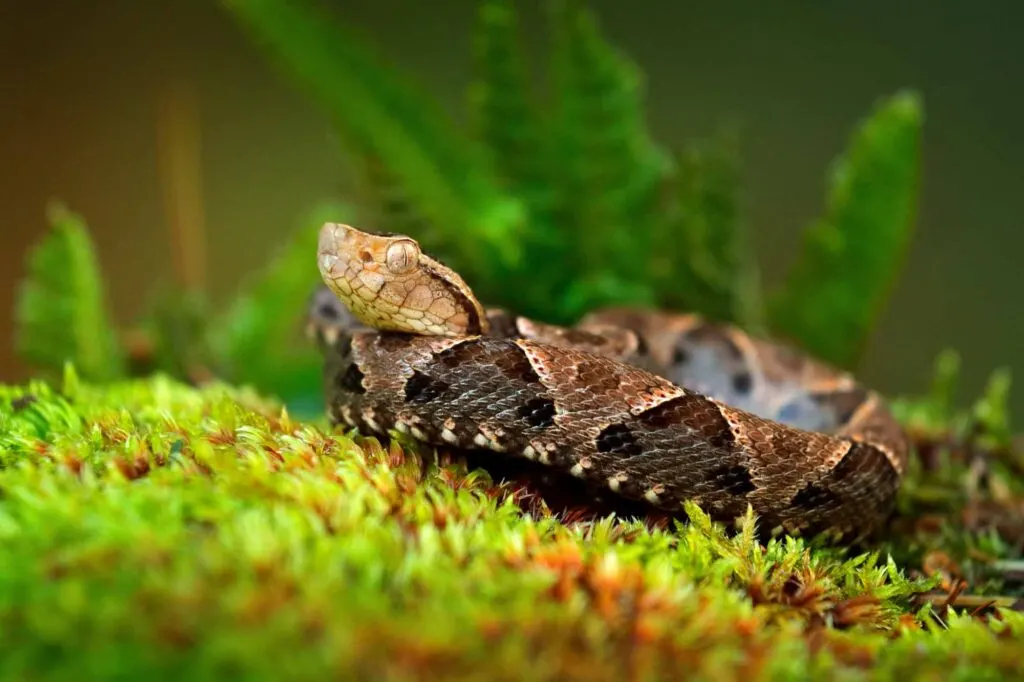
The common lancehead is a highly venomous Amazon Rainforest snake that presents mixtures of varying body colors (like gray, brown, olive, or green).
They are broadly distributed within the southern Mexico region to the northern South America region.
Appearance-wise, they can attain up to 6.5 feet in length and are known for having a triangular shape/lance-shaped head that appears pointed.
They usually coil around forest floors, tree bases, or fallen logs, which is ideal for prey, as they feed on fish, lizards, centipedes, birds, and small mammals.
10. South American rattlesnake (Crotalus durissus)
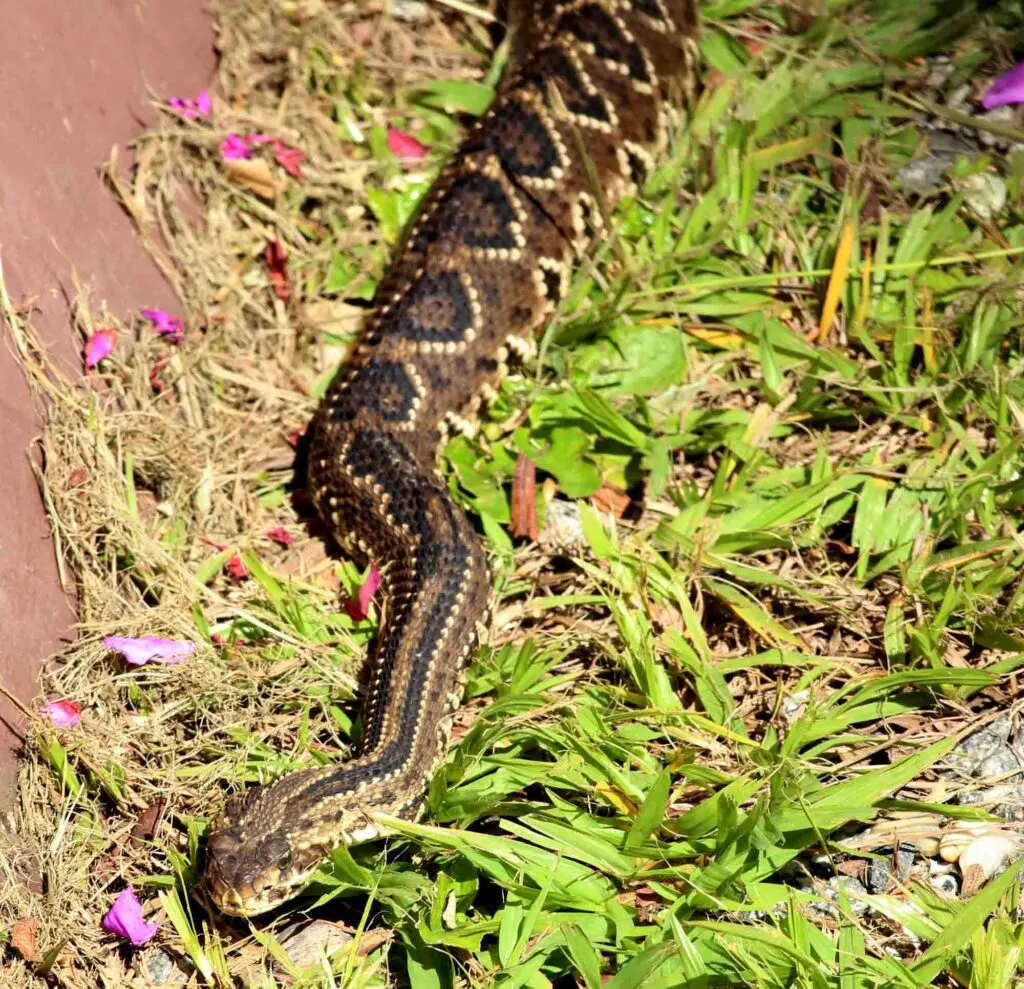
South American rattlesnake is an iconic snake in the Amazon and is recognized as one of the renowned snakes in the Amazon Rainforest.
It possesses a very dangerous venom that is more detrimental than the other rattlesnakes. This kind of Amazon snake prefers to stay around dry open places and grasslands.
In terms of dieting, the younger species feed mainly on arthropods, lizards, and amphibians, while the larger species settle for mammals, like rodents.
Its venomous snake bites are highly harmful to people and can easily destroy the human nervous system.
11. False water cobra (Hydrodynastes gigas)
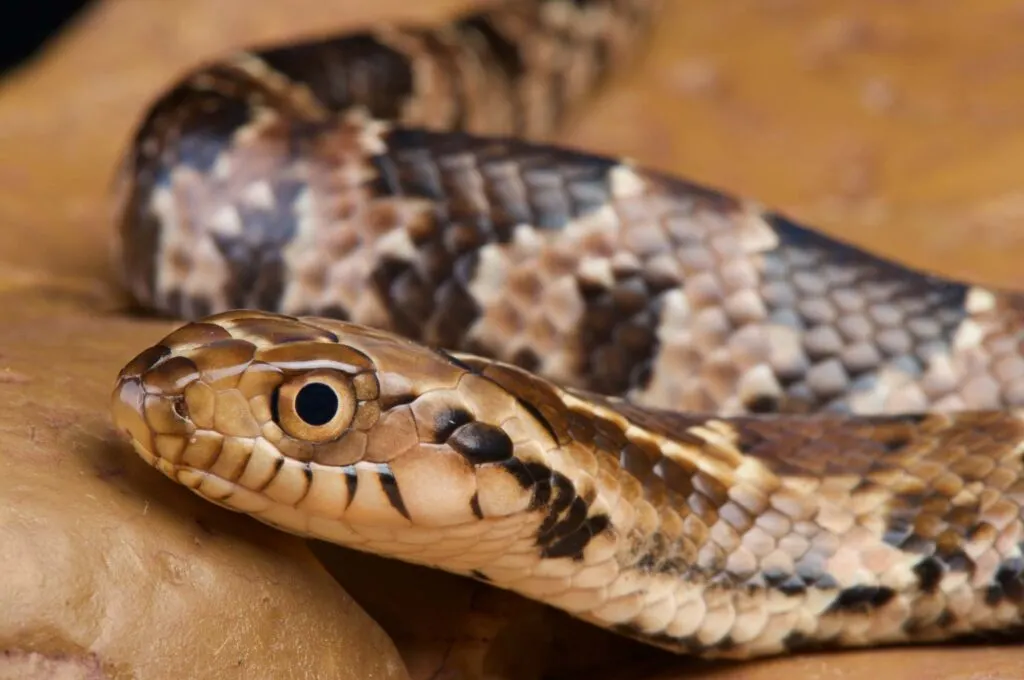
The terrestrial/semi-aquatic cobra is an Amazon Rainforest snake that prefers to dwell in humid or wet/tropical areas.
This species is located in eastern Bolivia, Southern Brazil, Paraguay, and northern Argentina.
False water cobra is a neotropical snake that grows up to an impressive length of 8 feet. It’s a hard-line predator, known to be highly active, and can get alerted when it notices a strange movement.
Its diet includes tadpoles, frogs, fish, reptiles, birds, mammals, and aquatic amphibians.
12. Green anaconda (Eunectes murinus)
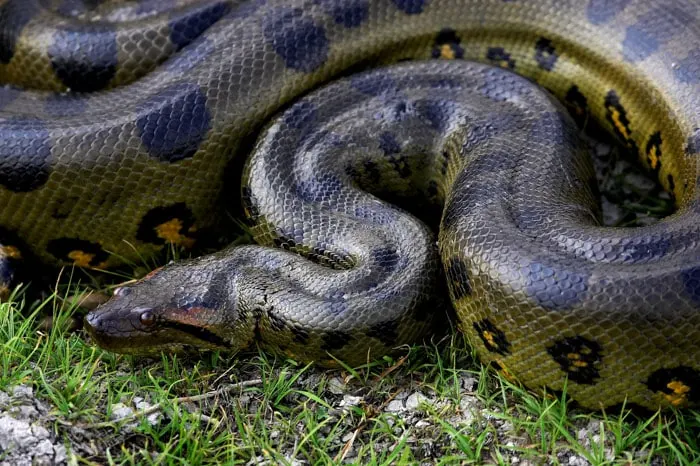
The green anaconda is the biggest snake on the planet – not because it is exceptionally long, but because it is the heaviest snake.
This incredible snake from the rainforest can grow up to a whopping 20-30 feet long, and it can weigh up to 550 pounds. It’s a beast!
Because the green anaconda is the world’s most enormous snake, its top speed is only 10 mph (nothing like JLo’s movie, huh? Still, it’s an interesting Amazon fact.).
While this Brazilian animal has an olive body with black spots, its head has orange-yellow stripes on both sides.
With a muscular body, the giant anaconda is an apex predator that feeds on other reptiles, fish, birds, sheep, deer, capybaras, caimans, and even jaguars.
As with any boa constrictors, the anaconda is non-venomous, so it constricts the prey until at least unconscious before swallowing it whole.
Lastly, the anacondas live in the Amazon Basin, especially the first streams, like the Amazon River.
Rainforest snake fact: Female anacondas are on average 4.7 times larger than males. That is the most significant size difference between genres in any land-living vertebrate. Also, the females strangle males after mating.
Learn more about the Amazon Rainforest animals
To deepen your understanding of the wide range of wild animals in the Amazon Rainforest, you might want to browse my other articles where I talk about the monkeys, spiders, mammals, and insects that live in this tropical forest.
But, if you want to learn more about other animals in Brazil, not only in the rainforest, you might want to check this guide I just linked above.
Did you like this post about the Amazon Rainforest snakes? Then send it to friends who would like it too!

ethan
Thursday 19th of January 2023
what the hell
noah
Monday 21st of March 2022
thank you for the help kind ser